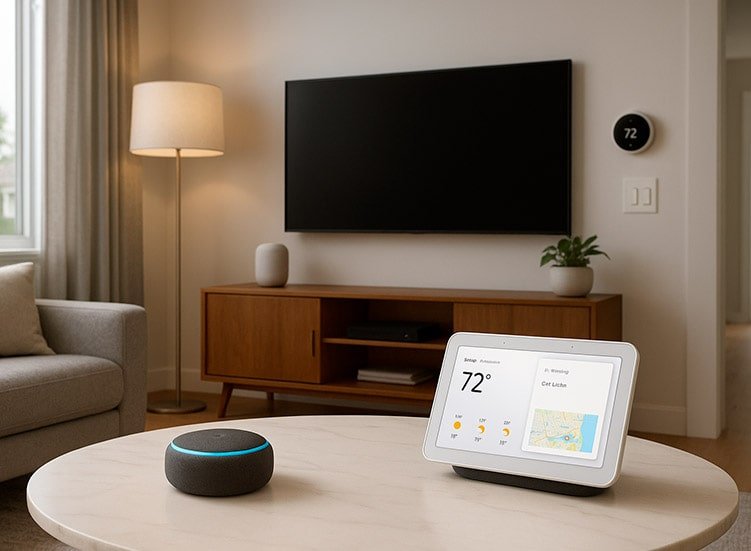If there’s one thing that has become part of our everyday life, it’s our almost total dependence on electronic devices. Smartphones, laptops, tablets, smartwatches, premium wireless earbuds… they’re all essential for work, study, entertainment and personal organization. And as these devices have become more advanced and sophisticated, they’ve also become more expensive, which means any damage, theft or malfunction can turn into a major headache. That’s why it’s increasingly important to consider investing in electronic device insurance.
The new reality of expensive and vulnerable electronics
Breaking a smartphone screen is no longer a simple, inexpensive problem you solve with a quick repair. A screen replacement can cost almost as much as a new device. Losing a laptop during your commute can directly affect productivity. A damaged tablet can interrupt online classes or work commitments. Even wireless earbuds, which used to be inexpensive accessories, now reach price points that justify more serious protection.
This is where electronic device insurance comes in. And even though the word “insurance” may sound too technical at first, it’s actually simple: it’s about protecting the device you rely on every day so your life keeps running smoothly. But as with any decision involving protection and cost, it’s normal to have questions. Is it worth it? When should you get it? Which type should you choose? Are insurance and extended warranty the same thing? Does the coverage really pay off?
If you’ve ever asked yourself these questions, or if you just want to avoid common mistakes, this guide will help you make the best decision possible—without complications or confusing terminology. We’ll look at how device insurance really works, how to identify a good plan and which factors truly determine whether it’s worth your money.
The goal here isn’t to convince you to buy something impulsively, but to help you evaluate, in a rational and practical way, whether device insurance fits your routine, your device and your budget. When you understand what really matters—and ignore what only creates noise—it becomes much easier to make a conscious decision and avoid unnecessary losses.
Why electronic device insurance has become so relevant
A combination of factors has made this type of insurance increasingly attractive: more fragile devices, higher prices and a fast-paced lifestyle. Mobility has increased, and with it, the likelihood of accidents.
Think about your own day. How often do you use your smartphone outdoors, while walking, commuting, going up stairs or working in busy environments? How often does your laptop travel in your backpack from one place to another? How many kids handle tablets for school or entertainment? How many people exercise with smartwatches or Bluetooth earbuds that can fall, get damaged or even be stolen?
The truth is that despite all technological advances, electronics remain vulnerable. And when something happens, the financial impact isn’t small—especially because modern repairs involve sophisticated parts, sensitive technology and specialized labor.
That’s why more and more people are looking for ways to protect their devices. It’s not just about “extra expenses.” It’s about avoiding being caught off guard and losing access to something you depend on to work, study or simply stay organized.
Insurance becomes an option to reduce losses, but it’s important to understand that it’s not for everyone—and that’s exactly why understanding how it works is so important.
What does electronic device insurance actually cover?
This is where most people get confused. The concept sounds simple, but in practice there are several types of protection, and each one works differently. Once you understand the differences, it becomes much easier to see what is or isn’t worth it for your situation.
In general, insurance covers situations beyond your control. This includes accidental damage such as drops, impacts, cracks or liquid spills. It may also include theft or robbery when you lose the device entirely and need reimbursement or a replacement unit. Some plans also include coverage for oxidation, electrical shorts, technical failures and even international protection—useful for people who travel or work on the go.
Extended warranty, on the other hand, does not cover accidents, contrary to what many people believe. It’s simply an extension of the manufacturer’s original warranty and protects against manufacturing defects that appear after the standard period. That’s why many people expecting broader protection get disappointed with extended warranty and think “insurance doesn’t work,” when in reality they were using the wrong product for the wrong purpose.
Understanding this difference is what prevents frustration. If you’re concerned about accidents, transportation, drops or theft, insurance is the right choice. If you only want to extend protection against defects, extended warranty works—but it won’t protect you from accidental damage.
When is electronic device insurance really worth it?
Insurance can be extremely valuable, but it’s not universal. It makes the most sense for people with a specific lifestyle, higher-value devices or increased exposure to risk.
Think about someone who spends the whole day outside, commuting, working in public spaces and using a smartphone or laptop constantly. A drop or theft directly affects work and can cause immediate financial or professional losses. For this type of user, insurance usually pays off. The same applies to families with young children who use tablets or earbuds—accidents are almost unavoidable—and to students or professionals who depend heavily on electronic devices for essential activities.
Another common scenario is for people who buy premium or more expensive devices. High-value electronics naturally come with higher repair costs, and insurance plays a strategic role. Paying a monthly fee or a single yearly amount is often cheaper than covering full replacement costs later.
For users who are more careful, use their devices mostly at home or have lower-value models, the evaluation should be more balanced. Insurance can still be helpful, but it’s not an urgent necessity. In many cases, someone may simply save a small amount specifically for occasional repairs.
There is no universal “yes or no.” There is only the analysis of your routine, your usage and the impact of being without your device.
How to understand the real cost-benefit of electronic device insurance
This is one of the most important parts, because many people focus only on the monthly fee and forget to consider the whole picture. It’s not just about how much you pay, but how much you avoid losing.
If you buy a higher-value device like a work laptop and pay for an insurance plan that represents only a small percentage of its price, the cost-benefit is usually positive—especially if you use it in transit or in busy places. The simple peace of mind of knowing that an accident won’t leave you without essential tools already has meaningful value.
On the other hand, if the insurance cost is high compared to a low-cost device, it may not make sense. This relationship between device price, real risk and protection cost is what determines whether insurance is a smart investment or just an extra expense.
Deductibles also affect this calculation. Some insurance companies require you to pay part of the repair or replacement cost, and this must be included in your evaluation. If the deductible is too high, the insurance becomes less effective. If it’s low or nonexistent, the protection becomes far more appealing.
Consider how you use your device, where you take it, how often it’s exposed and how difficult it would be to replace it quickly. These factors give you a clear answer about cost-benefit.
The most common mistake: ignoring exclusions
One of the biggest reasons people feel frustrated when using any insurance is the lack of clarity about what is not covered. Many people read the advertisement but never read the contract. This does not mean that companies are trying to deceive anyone; it only means that consumers need to protect themselves just as they protect their devices.
By understanding the exclusions, you avoid unpleasant surprises when filing a claim. For example: some electronic device insurance plans do not cover corrosion caused by saltwater contact, others do not cover drops on hard surfaces, and some limit coverage for theft, covering only forced-entry theft or robbery.
Knowing these details is not bureaucracy — it is the guarantee that you are purchasing exactly what you need, nothing more and nothing less.
Where to buy reliable electronic device insurance without falling into traps
Today there are several ways to purchase electronic device insurance, and each one has its advantages. On platforms like Amazon in the U.S., protection plans appear as a discreet option at checkout and work as a quick add-on for anyone who wants uncomplicated coverage. It is simple and straightforward, ideal for those who have just purchased a new device.
Retail chains also offer their own protection plans, which often include technical support and fast replacement. Independent insurance companies provide more personalized plans, with specific options for different types of devices, including smartphones, tablets, laptops, smartwatches, earbuds, and even gaming consoles.
The most important thing is choosing a company with a solid reputation and clear customer-service processes. Protection only matters if it works when you actually need it.
Below is a list of some of the main electronic device insurance providers in the U.S.
How to compare different types of insurance naturally
A good way to understand which insurance plan is ideal for you is to see how it fits your lifestyle. For example, if you work while traveling or commuting, a plan with international coverage and wider protection makes sense.
If you have children who use tablets every day, coverage specifically focused on drops and breakage is far more useful. And if you use a laptop as a work tool, your priority should be plans that offer quick replacement.
This comparison does not need to be a technical or time-consuming process. It is much more about recognizing your real needs than about understanding every legal term in the contract.
The emotional and financial impact insurance helps you avoid
Few people think about this, but insurance has an important psychological effect. It reduces the anxiety of carrying an expensive device every day. Lowering the fear of drops, theft, or unexpected damage has real value.
In addition, device insurance protects not just the device, but the flow of your daily routine. A broken laptop delays work and commitments. A lost smartphone disrupts your schedule, passwords, contacts, and essential apps. A damaged smartwatch interrupts workouts and health tracking. Lost earbuds can leave you without audio during meetings or classes.
Insurance cannot prevent these things from happening, but it prevents them from turning into crises.
What to consider before buying electronic device insurance
Before deciding, ask yourself a few simple questions: is the device essential in your daily life? Do you commute frequently? Would the repair cost be a real problem? Would you feel safer with protection? Does the insurance price fit your budget without affecting other priorities?
If the answer is “yes” to most of them, electronic device insurance is probably a smart choice.
If the answer is “no”, it may be better to save that amount and create your own reserve fund.
What matters most is making a conscious choice aligned with your lifestyle and the way you use your devices.
❓ FAQ — frequently asked questions about electronic device insurance
No. It only covers the damages listed in the policy, such as drops, accidents, theft, or robbery, depending on the plan.
It depends on your needs. Insurance covers accidents and theft, while extended warranties cover manufacturing defects.
Yes. Some insurers allow it, but coverage limitations may apply.
For cheaper devices, the cost–benefit ratio should be evaluated more carefully.
conclusion about electronic device insurance
Electronic device insurance is not just an extra cost: it’s a strategic decision. It makes sense when the device has significant financial or emotional value, when you expose it to daily risks, and when a breakage or loss would disrupt your routine. It’s not necessary in every case, but when it is, it prevents major losses and brings peace of mind.
This guide was designed to help you understand exactly how to make that decision — simply, humanely and practically, without unnecessary jargon or excessive technical complexity.
If you know someone who keeps dropping their phone or uses a laptop all day outside the home, sharing this article can help them avoid a costly problem in the future.
 recommended reading on Tudum Blog
recommended reading on Tudum Blog
If you’re interested in ways to insure yourself and reduce unexpected costs, also check out our other article: Life insurance: how to compare quotes and choose the best policy for your family
Enjoyed the content? Share it with a friend or family member who still doesn’t know how to keep their devices safe and protect the money they invested.
Click here for more content about Technologies & News.








